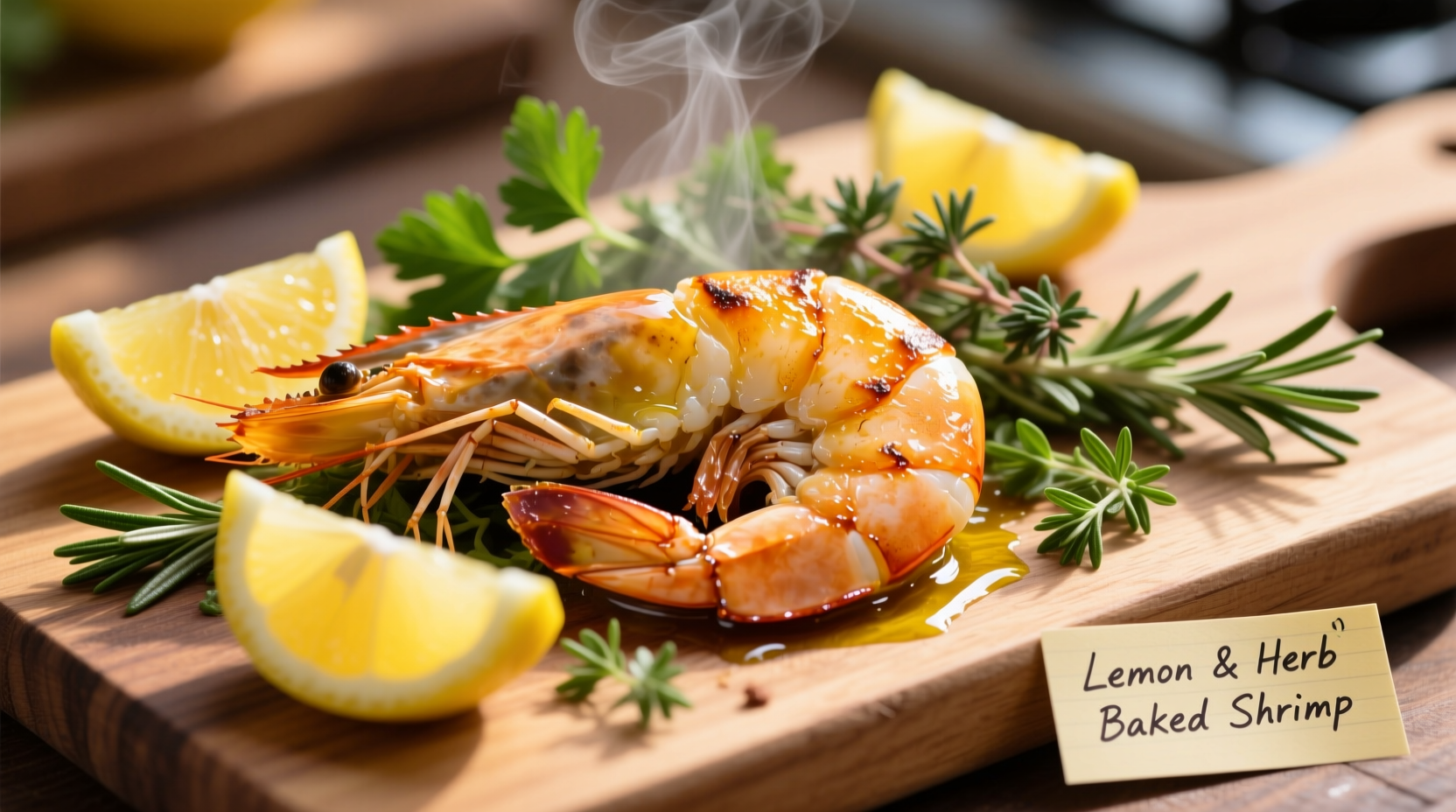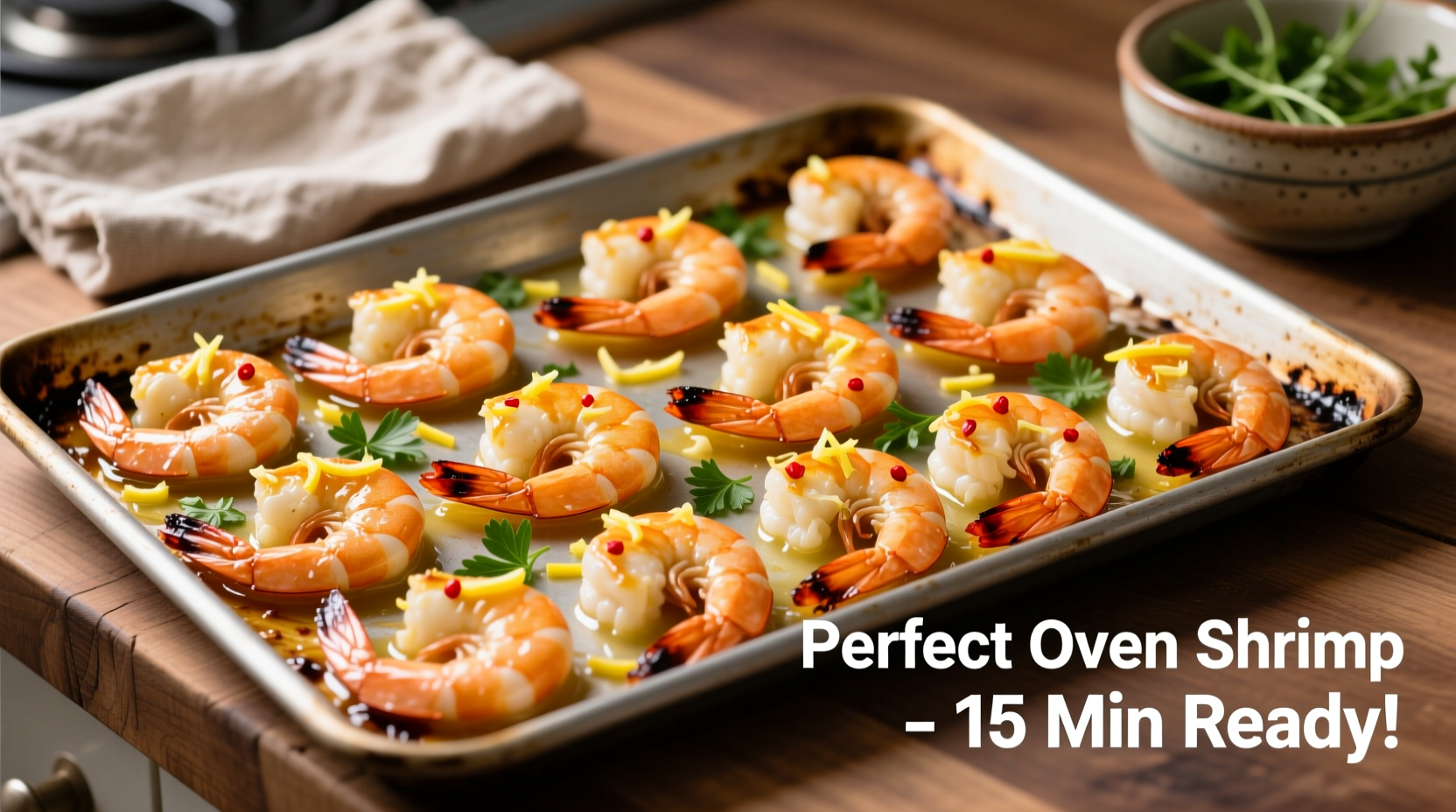Preheat your oven to 400°F (204°C), arrange peeled shrimp in a single layer on a baking sheet, and bake for 8-12 minutes until opaque and pink. The internal temperature should reach 145°F (63°C) for safe consumption. Proper seasoning and avoiding overcrowding are key to achieving restaurant-quality results at home.
Discover the foolproof method for cooking shrimp in the oven that delivers consistently juicy, flavorful results without constant monitoring. Unlike stovetop methods that require precise timing, oven-baking provides a more forgiving window for perfect shrimp every time. Whether you're preparing a quick weeknight dinner or an impressive date-night meal, this technique eliminates the stress of overcooking while maximizing flavor potential.
Selecting and Preparing Your Shrimp
Start with high-quality shrimp for optimal results. Look for "wild-caught" options when possible, as they typically have better texture than farm-raised varieties. The size matters too—16/20 count shrimp (meaning 16-20 shrimp per pound) work best for oven cooking because they're large enough to resist drying out but small enough to cook evenly.
Proper preparation is crucial. If using frozen shrimp, thaw them overnight in the refrigerator rather than using quick-thaw methods that can damage texture. Never cook frozen shrimp directly in the oven—that leads to uneven cooking and rubbery results. After thawing, pat shrimp thoroughly dry with paper towels. Excess moisture creates steam instead of the beautiful sear you want.
| Shrimp Size (Count per Pound) | Recommended Oven Time | Best For |
|---|---|---|
| 16/20 | 8-10 minutes | Most versatile, ideal for beginners |
| 21/25 | 6-8 minutes | Quick meals, skewers |
| U/15 (Extra Large) | 10-12 minutes | Special occasions, stuffed preparations |
Seasoning Strategies for Maximum Flavor
Simple seasoning often yields the best results with shrimp. Create a balanced oil mixture using one part acid (lemon juice or vinegar) to three parts oil. Toss shrimp gently in this mixture with your chosen seasonings. Avoid heavy marinades that can "cook" the shrimp through acid exposure before it even hits the oven.
Professional chefs recommend these flavor combinations:
- Mediterranean: Olive oil, garlic, lemon zest, oregano, and red pepper flakes
- Cajun: Paprika, cayenne, thyme, garlic powder, and onion powder
- Asian-inspired: Sesame oil, ginger, soy sauce (use sparingly), and scallions
Remember that shrimp absorb flavors quickly. For best results, season just 15-30 minutes before cooking. Longer marinating times can break down the delicate proteins, resulting in mushy texture.
The Oven Cooking Process: Temperature and Technique
Preheating is non-negotiable for successful oven-baked shrimp. Set your oven to 400°F (204°C)—this temperature provides the perfect balance between gentle cooking and surface browning. Lower temperatures (350°F) take too long and can dry out the shrimp, while higher temperatures (425°F+) risk burning the exterior before the interior cooks through.
Line your baking sheet with parchment paper or lightly grease it to prevent sticking. Arrange shrimp in a single layer with space between each piece—overcrowding creates steam that prevents proper browning. For extra-crispy results, place shrimp on a wire rack set over the baking sheet.
Food safety is critical when cooking seafood. According to the FDA's Food Safety and Inspection Service, shrimp must reach an internal temperature of 145°F (63°C) to be safe for consumption. Use an instant-read thermometer for accuracy—visual cues alone can be misleading.
Troubleshooting Common Issues
Problem: Shrimp are rubbery or tough
Solution: You've overcooked them. Reduce cooking time by 1-2 minutes next time. Shrimp continue cooking from residual heat after removal from the oven, so pull them out when they're just starting to turn opaque.
Problem: Shrimp aren't browning properly
Solution: Your oven temperature may be inaccurate. Use an oven thermometer to verify. Also ensure you've patted shrimp completely dry before seasoning—moisture prevents browning.
Problem: Shrimp are sticking to the pan
Solution: Use parchment paper or properly grease your baking sheet. Avoid flipping shrimp too early—wait until they've developed a crust before attempting to move them.
When Oven Cooking Shines: Context Boundaries
Oven-baking shrimp excels in specific scenarios where other methods fall short:
- Large batches: Perfect for entertaining when you need to cook 2+ pounds of shrimp without constant attention
- Cold weather: Unlike stovetop methods that heat up your kitchen, oven cooking contains the heat
- Hands-off cooking: Ideal when preparing multiple dishes simultaneously for holiday meals
However, oven cooking isn't ideal for certain preparations. For delicate shrimp cocktails requiring precise doneness, or when immediate serving is critical (like at a buffet), stovetop methods provide better control. Understanding these context boundaries ensures you choose the right technique for each culinary situation.
Serving Suggestions and Pairings
Oven-baked shrimp pairs beautifully with simple sides that won't overpower their delicate flavor. Try these combinations:
- Summer: Over a bed of arugula with cherry tomatoes and lemon vinaigrette
- Winter: Alongside roasted root vegetables and a garlic-herb quinoa
- Festive: Skewered with bell peppers and zucchini, served with cilantro-lime rice
For the perfect finish, squeeze fresh lemon juice over cooked shrimp just before serving. The acidity brightens the flavors without overwhelming the delicate seafood. Garnish with fresh herbs like parsley, dill, or chives for a professional touch.

Mastering oven-baked shrimp opens up endless possibilities for quick, impressive meals. By understanding the precise temperature requirements, proper preparation techniques, and strategic seasoning approaches, you'll consistently achieve restaurant-quality results at home. The method's reliability makes it perfect for both weeknight dinners and special occasions—no more last-minute stress when cooking seafood.











 浙公网安备
33010002000092号
浙公网安备
33010002000092号 浙B2-20120091-4
浙B2-20120091-4